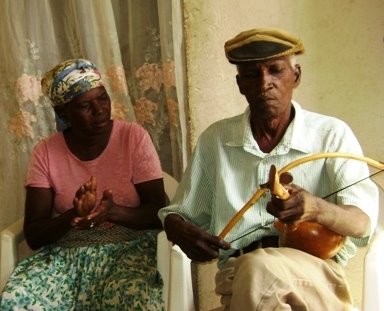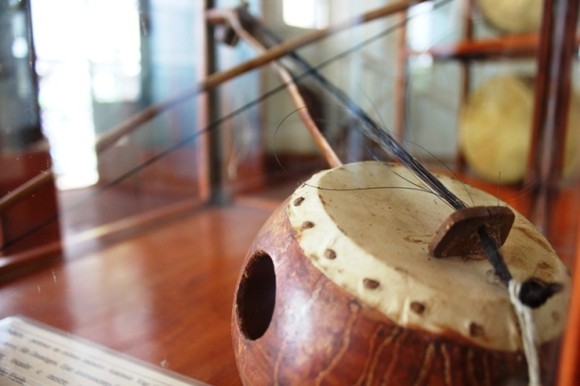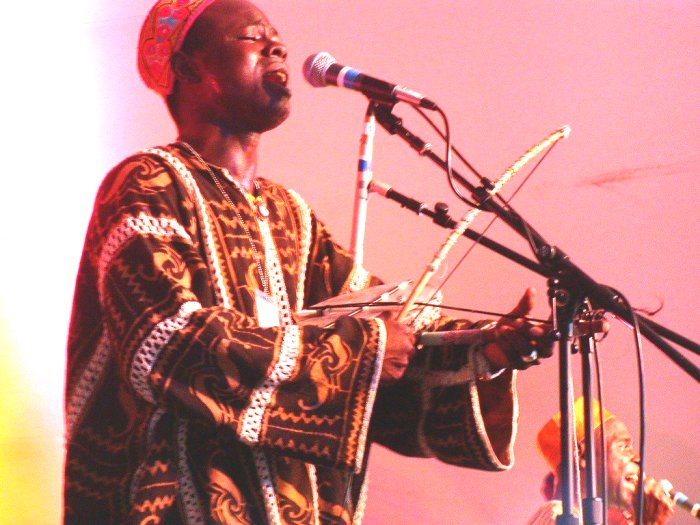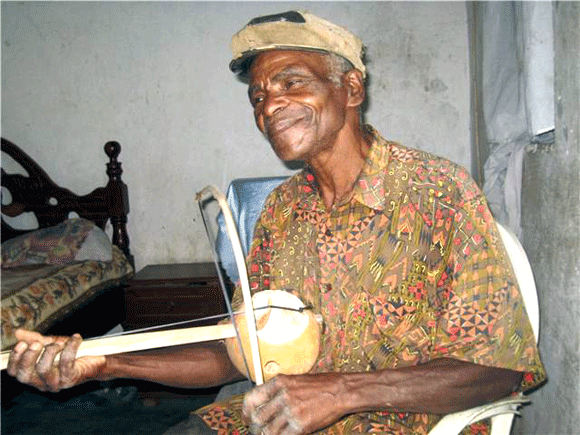CIMBOA
This violin like instrument is unfortunately getting very rare. In the past it was used frequently during Batuku events though. The Batuku dance and music are also clearly Upper Guinean in inspiration but no direct equivalent on the mainland has been found up till now. At least not that I am aware of. Perhaps also because of separate evolution on Cape Verde (females playing a dominant role unlike in most mainland musical traditions). The only equivalent I can think of this female dynamic is Mandjuandadi music from Guiné Bissau. Although the dancing and other aspects are different.
However the Cimboa itself seems to be clearly hailing from the northern parts of Senegambia. The word itself apparently being derived from Mandinga. This quote below is mentioning the Mandinga etymology and how it used to be played also on other islands besides Santiago. Although it migh have gone extinct in most places it seems the dominance of stringed instruments in Cape Verdean music might be linked to the legacy of the Cimboa.
____________________
____________________
On Wikipedia the Cimboa is being compared with Sahelian instruments from Chad/northern Nigeria, but obviously this area is not where Cape Verdeans share any ancestral connections with. From the Cape Verdean travelling accounts dating from the 1500’s/1600’s similar string instruments are actually mentioned for both the Wolof and Mandinga. They already describe the griots back then and also how they formed a separate caste. Personally I think the Riti instrument from Senegal is a more likely predecessor of the Cimboa . According to some it’s a Fula instrument originally but like I said similar violin like instruments were already played by the Wolof & Mandinga according to accounts from the 1500’s/1600’s.
____________________
____________________
Cool site about saving the Cimboa, it also has a sample at the very end with one of the last persons (Mano Mendi) able to still play it the traditional way. Sounds very Sahellian to me.

***
Go to the end of this video to hear the Cimboa being played
***
Compare with this Riti video from Senegal
***
Cimboa being played in Cape Verde
***
Cape Verdean Cimboa

***
Riti from Senegambia

***



